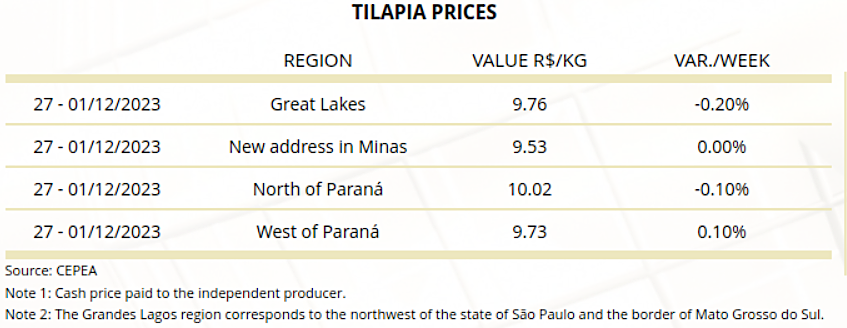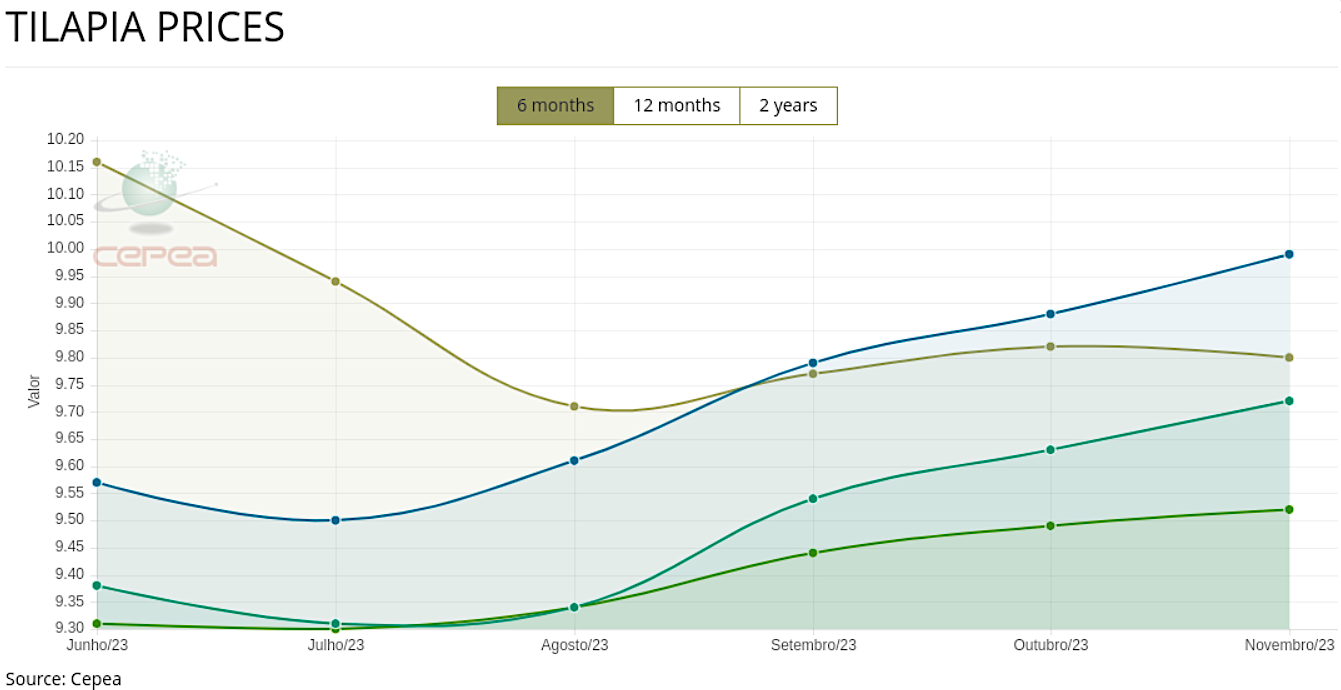|

Image: AgroNews / FIS
Brazilian tilapia market
 BRAZIL
BRAZIL
Tuesday, December 05, 2023, 01:00 (GMT + 9)
Super grains harvest and weather patterns influence the market
Amid a bumper harvest of grains this year, tilapia farmers and natives turn their attention to the delicate balance between supply, demand and the complexities of climate
.png)
Source: Stockfile FIS
Complete analysis carried out by Francisco Medeiros – president of Peixe BR
Tilapia market
In the latest Cepea Peixe BR survey, which focuses on tilapia, we observed notable fluctuations in prices in different regions. In the prosperous Great Lakes region, covering São Paulo and Mato Grosso do Sul, a slight drop of R$ 0.02 (USD 0.0041) per kilo was recorded, stabilizing the average price at R$ 9.76 (USD 2) in the Paraná. On the contrary, in the western region of Paraná, there was an increase of R$ 0.01 (USD 0.002), setting the average price at R$ 9.73 (USD 1.99). In Minas Gerais, in Morada Nova de Minas, the market remained stable, with a constant price of R$ 9.53 (USD 1.95) per kilo.

Rising supply and its impacts
The dynamic between supply and demand was evident with a gradual increase in the supply of tilapia, directly influencing prices. This scenario of greater supply can be attributed to the hot weather conditions of recent days, boosting production. However, the sustainability of this climate pattern and the balance of supply and demand will be crucial in determining the market's future prospects.
.png)
Native fish and supply challenges
In the native fish segment, the market remains resilient, although the main producing regions face a lack of rainfall. The North and Central-West regions, unlike the South, are experiencing less than necessary rainfall, resulting in delays in fry replacement. Although this delay is not alarming, it is a factor that deserves monitoring, as replenishing water in the ponds in the coming weeks could become critical.
Climate impacts on agribusiness
A relevant climate phenomenon is the lack of rain in the Midwest, a condition that not only affects the fish market, but also casts shadows on the agricultural sector. The delay in planting soybeans, an essential crop for the second corn harvest, could lead to a lower supply of corn next year. Considering the importance of corn in the production of fish feed, this sequence of weather events can directly impact production costs, increasing the final price for consumers.

Perspectives
Amid a bumper grain harvest this year, producers are turning their attention to the delicate balance between supply, demand and the complexities of the weather. As they face market fluctuations, strategic management becomes imperative to successfully navigate the turbulent waters of the farmed fish industry.
.png)
Source:AgroNews
We remain attentive to future tides, aware that sustainability and adaptability will be the anchors that will ensure smooth sailing in the dynamic scenario of the Brazilian fish market.
Author: Vicente Delgado | AgroNews (Translated from the original in Portuguese)

[email protected]
www.seafood.media
|



